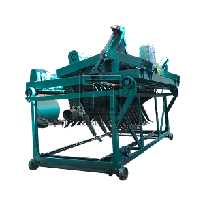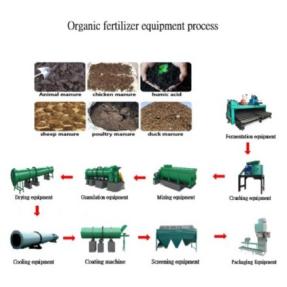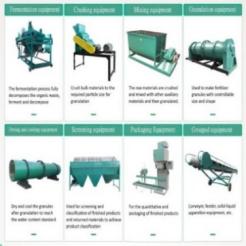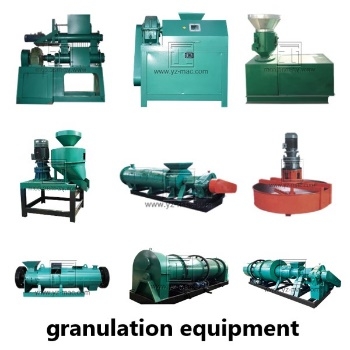Organic fertilizer production line
An organic fertilizer production line typically involves several processes that convert organic waste materials into usable fertilizers. The specific processes involved will depend on the type of organic fertilizer being produced, but some of the common processes include:
1.Raw Material Handling: The first step in organic fertilizer production is to handle the raw materials that will be used to make the fertilizer. This includes collecting and sorting organic waste materials such as animal manure, food waste, and crop residues.
2.Composting: The raw organic waste materials are then processed through a composting process, which involves creating an environment that allows for the breakdown of organic matter by microorganisms. The resulting compost is rich in nutrients and can be used as a fertilizer.
3.Crushing and Screening: The compost is then crushed and screened to ensure uniformity of the mixture and to remove any unwanted materials.
4.Granulation: The compost is then formed into granules using a granulation machine. Granulation is important to ensure that the fertilizer is easy to handle and apply, and that it releases its nutrients slowly over time.
5.Drying: The newly formed granules are then dried to remove any moisture that may have been introduced during the granulation process. This is important to ensure that the granules do not clump together or degrade during storage.
6.Cooling: The dried granules are then cooled to ensure that they are at a stable temperature before they are packaged and shipped.
7.Packaging: The final step in organic fertilizer production is to package the granules into bags or other containers, ready for distribution and sale.
Overall, organic fertilizer production lines are complex processes that require careful attention to detail and strict quality control measures to ensure that the final product is effective and safe to use. By converting organic waste into a valuable fertilizer product, these production lines can also help reduce waste and promote sustainable agriculture practices.








